Hello, this is Director Yamanaka.
I work in the Yoyogi office, but since last year I have been working more on projects with people in far-away locations, such as our members in Kamiyama and Thailand.
In particular, this proportion has increased since the Kamiyama satellite office was established, but at first, we were somehow managing to get things done through trial and error. It is true that we felt frustrated when small things were not communicated well, or when we were unable to communicate things that we could have communicated verbally if we were nearby.
After making use of various tools, we came to the conclusion that a daily 30-minute meeting using Hangouts* would solve many of our problems.
* = Video calling service provided by Google
I would like to share with you what problems we were able to solve by having daily meetings on Hangouts.
The benefits of 30 minutes of meetings every day
When I first started working with the Kamiyama team, we took the stance of "holding meetings as necessary." Although we didn't have any major problems with this approach, things would not go as planned, there would be small misunderstandings, and it would end up taking up more and more time later.
So I thought it would be more efficient to resolve various issues in advance rather than spending time dealing with them later, and so I started holding 30-minute meetings every day.
Here I will summarise the effects I have felt in four points.
1. I can ask small questions and clarify things.
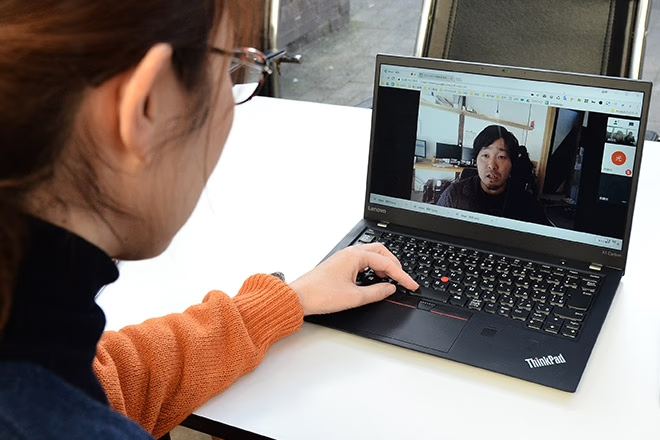
From now on, a furious rush to confirm things will begin through the screen.
When we start a project, we have a thorough orientation at the beginning, but when we actually start production, various things come up that we are a little concerned about. If we are in the same space, we can easily check, but if we are far away, we tend to put it off because we don't want to bother calling or chatting. (Both the director and the production team)
Even small things can have a big impact on later processes. By meeting every day, you can feel free to ask about things that you are worried about, things that you would ask about right away if you were nearby, and those "things that are bothering you."
Because you are apart, setting aside even 30 minutes every day can help you make sure to check these small details and prevent any problems from occurring.
2. It can correct misunderstandings
"I want this part to be like this."
If you're close by, you can easily explain things by pointing at them, but if you're far away, it's not so easy. That's when the screen sharing feature of Hangouts comes in handy.
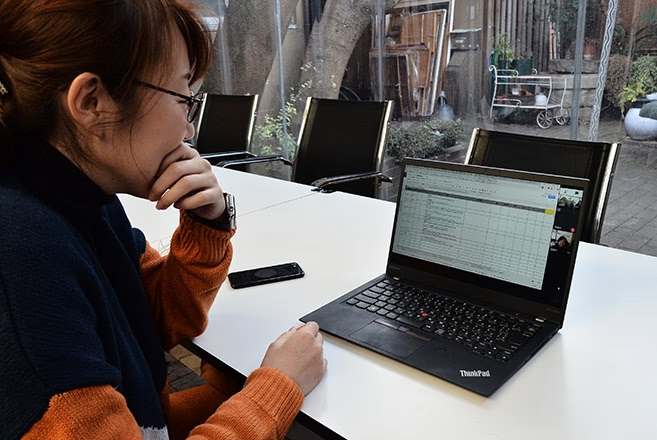
The spreadsheets are synchronized in real time, so you can proceed while checking that each party's understanding is correct.
While displaying the shared document on the PC monitor, you can explain to the other person by looking at their facial expressions on your smartphone. By doing so, you can also see whether the other person understands.
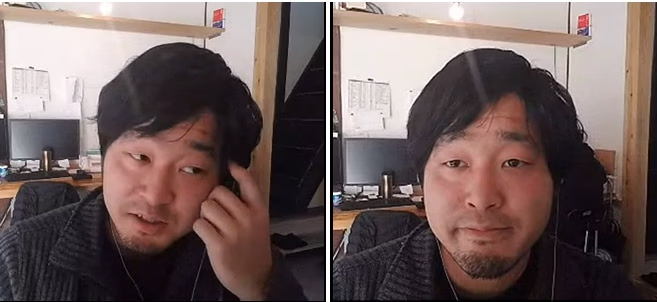
(Left) Facial expression of someone who doesn't quite understand (Right) Facial expression of someone who clearly understands
By explaining things using gestures rather than just words, you can check whether there are any misunderstandings between you and the other person, gauge their level of understanding by looking at their facial expressions, and continue discussing until both parties are satisfied.
3. Know how your teammates are doing
If you just want to communicate, you can do so over the phone or Chatwork, but seeing the other person's face allows you to get information that you can't get from voice or text.
For example, they may be wearing a mask, look exhausted, or conversely, look lively and happy. It is surprisingly important to know how they are feeling that day.
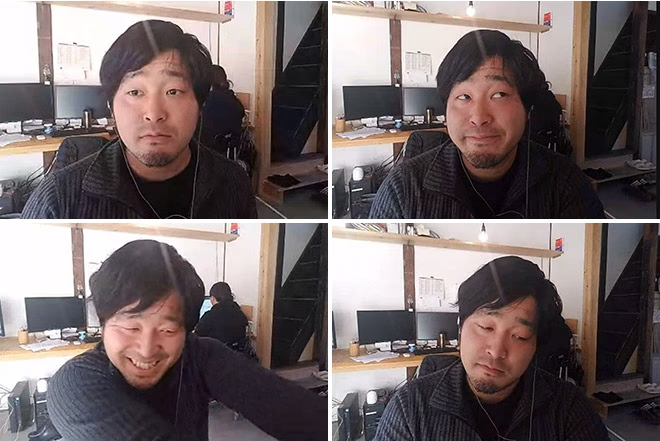
Sato-kun has a rich expression
Depending on the progress of the project, there are times when I want someone to finish their work even if it means pushing themselves. At such times, I can look at the other person's expression and judge whether it is okay to cram in work at that time. Also, if I see that they are in a hurry, I follow up on them on the spot to resolve the issue.
4. You can chat
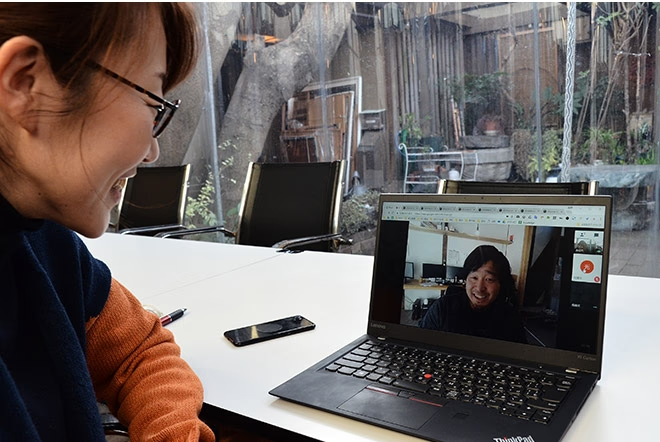
When there is time, conversation flows easily. It is always good to proceed with a project in a friendly atmosphere.
When a project is progressing smoothly, the things that need to be confirmed in daily meetings gradually decrease, and confirmation work can sometimes be completed in around 10 minutes.
In that case, it's okay to finish in 10 minutes (I do that when I'm busy), but sometimes chatting about trivial things, not just work, but also about personal matters, is an opportunity to get to know the other person better. If you're going to work together, you want to work in a good atmosphere. I think that sometimes, enjoying silly conversations will also foster consideration for each other.
Nowadays, with the proliferation of convenient tools, it's not so difficult to work together with people who are far away. However, meeting face to face creates an intangible sense of security, and I think this sense of security has a significant impact on the work we create.
We will continue to seek out ways to hold better meetings and find ways to move projects forward more smoothly with members who are far away.
Bonus: What I learned after actually going to Kamiyama
There is a lot of information coming in about life at the Kamiyama satellite, but seeing is believing. I once did satellite work in Kamiyama for about a week and realized this.
That is, "all kinds of people suddenly come."
During the few days I was there, many people came and went, including university students who came to inspect the office, a sudden TV interview, and people sharing some of the prototype bread from the Food Hub Project.

(Left) A sudden TV interview was broadcast worldwide on NHK WORLD. Our leader, Kurihara, answers questions with ease. (Right) The baker brought us a prototype of Kamapan. I'm so jealous...
Time flows differently in Kamiyama than it does in Yoyogi. It is also difficult to work quickly while valuing relationships with the local community and neighbors who have been kind to us. I had heard about it, but when I experienced it for myself, it was much different than I had imagined. I felt that it was important to respect the culture, style, and way of time of the place as we proceed with a project.
This time, I wrote about how to proceed with production with members who are far away, but I think that "meeting once a day" is important when proceeding with projects with in-house members even if they are not far away. As a director, I would like to first create an environment through "meetings" where the production team can concentrate on their work without hesitation and with peace of mind.

